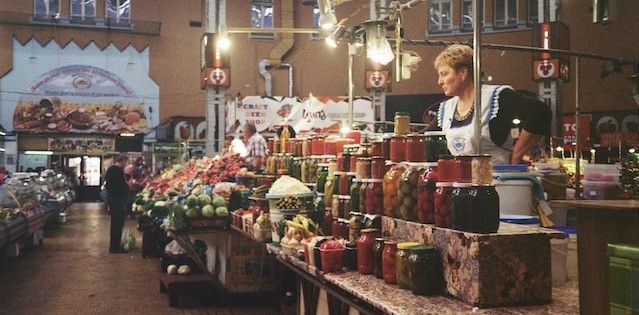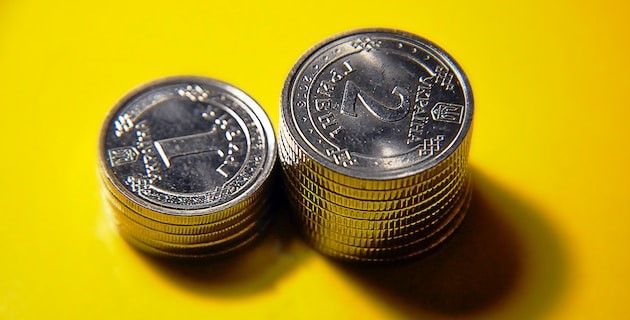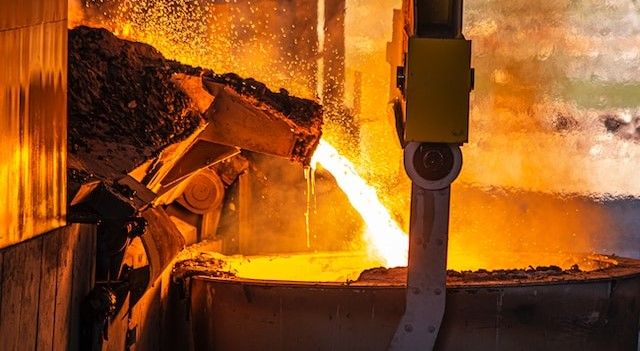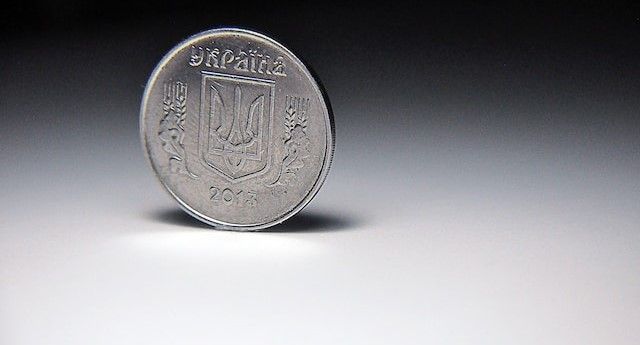When the Russian army surrounded Kyiv in the early days of the war. Ukrainian life was put on hold as a deadly struggle for independence began.
Business life also froze, as shops emptied and supply chains collapsed.
It was also at this time that businesses adopted a new importance. As Oleksiy Panasenko, deputy director general for operations at a popular supermarket chain recalls, “In February and March, our shops became more than a place to buy food: they were a place to meet, to communicate; so-called islands of stability.”
More than one year on from those precarious times and the situation has stabilised for large parts of the country. Yet, how is the economy coping with the situation and can businesses survive?
While the latest data showed that the Ukrainian economy shrank by a third in 2022, the freefall since those early days has stopped. This means that according to the European Business Association (a group of more than 1,000 businesses based in the country) 47% of members have fully restored operations while another 50% are still running with some limitations.

Challenges do remain, as Russian missile attacks continue to kill workers, damage shops, and hamper electricity supply.
Ukraine's largest steel mill, ArcelorMittal Kryvyi Rih claims that output is only at about 25% of pre-war levels - largely due to electricity blackouts. However, less energy intensive businesses have managed better.
"We see small and medium-sized businesses adapt fairly quickly to power shortages by purchasing generators, batteries, and other equipment," observes Olena Bilan, chief economist at Dragon Capital investment house.

Survival is a good sign, but infrastructure damage, intermittent electricity, and the loss of manpower is harming overall productivity, with a recent Reuters poll of seven economists predicting a 5% fall in GDP. Albeit, that economic forecasts vary greatly due to the very liquid situation of war.
Ukraine's central bank, is actually optimistic, predicting GDP to actually grow by 0.3% this year, while the economic ministry is even forecasting 3.2% growth.
“If this situation persists,” said Bilan, “the fall in GDP in 2023 will not be as significant as we expect. But our forecast also envisages an end of the war's hot phase at the end of third quarter of 2023.”

The cost of the war is huge, but it is providing a level of income to the nation’s economy. In 2022 Ukraine spent more than $40 billion on military hardware, supplies and army wages – a level of spending which according to Finance Minister Serhiy Marchenko increases government debt by $3-$3.5 billion a month.
It is a spending level that is unsustainable, but it is still money which helps businesses to maintain a level of sales and economic activity.
A further boon to the economy has been the UN-brokered grain export deal which re-opened exports from Odessa. This was essential to avoid food shortages in many developing countries as well as providing much needed foreign income for Kyiv. Before the war, agriculture accounted for 12% of Ukrainian GDP and a massive 40% of total exports.
While the return to exporting has saved Ukrainian farmers from bankruptcy, grain exports have fallen 29% year-on-year.

The worst hit industries have been larger manufacturing industries, especially the steel sector which was the 14th largest producer in the world before the Russians invaded.
Today, the country’s two leading steel producers, Azovstal and MMK Illicha are officially bankrupt with the steelworks in Mariupol in ruins.
“Blackouts for companies like us are a big issue,” says Mauro Longobardo, general director of ArcelorMittal Kryvyi Rih, one of the remaining steel companies.
While imports of energy from Slovakia have kept most of the lights on, the costs are much higher. Other impacts to business bring home the true cost of the war – a warehouse hit by three Russian missiles in December killed a worker, and a recaptured mining facility was found to be littered with landmines. The damage to machinery and logistics systems also puts strain on a company that previously exported 80% of its output.
What little can be sold overseas today has to be transported through Poland as the Black Sea ports are blockaded.

If Ukraine is to restore its pre-war economic power, then it will require major foreign investment. The basics of roads, bridges, schools, and hospitals may be paid for by loans and support from the US, the EU, and other G7 members, however, true recovery will need long-term private investment in industry.
To achieve this, Ukraine will need to reverse its image and history as a corrupt former-Soviet satellite. In 2021, the country was the second worst in Europe on the Transparency International's Corruption Perceptions Index. Only Russia fared worse.
But with new political leadership, a ‘clean slate’ to rebuild anew, and EU support for tackling corruption as an element towards membership, there is revised hope that Soviet ways may be behind them.
“We still have to address all those issues (transparency and corruption) that we have not had time to before the war began,” says Vitaly Vavrishchuk, head of research at ICU investment house. If this can be done, then he believes that, “Participation in the post-war reconstruction could be attractive for investors.”

Life is continuing in Ukraine, as it must, and businesses are coping with the daily challenges of being at war. But it all comes at a cost.
The Kyiv School of Economics has estimated that as of December 2022, the total damage to infrastructure has cost $138 billion. It is a figure that is still rising, and no one is sure how it will be repaid.
Maybe war reparations from Russia will cover the bill (should they have any money left). Or Russia will win, and the recovery funding will come from Moscow.
For now, though, the economy slogs on, business still works, and the dream of a more prosperous and peaceful future remains.
Photo credit: Tina Hartung on Unsplash, Darla Hueske, Oleksandr Brovko, Yasin hm, Adrianna Kaczmarek, WALK, & Oleksandr Brovko